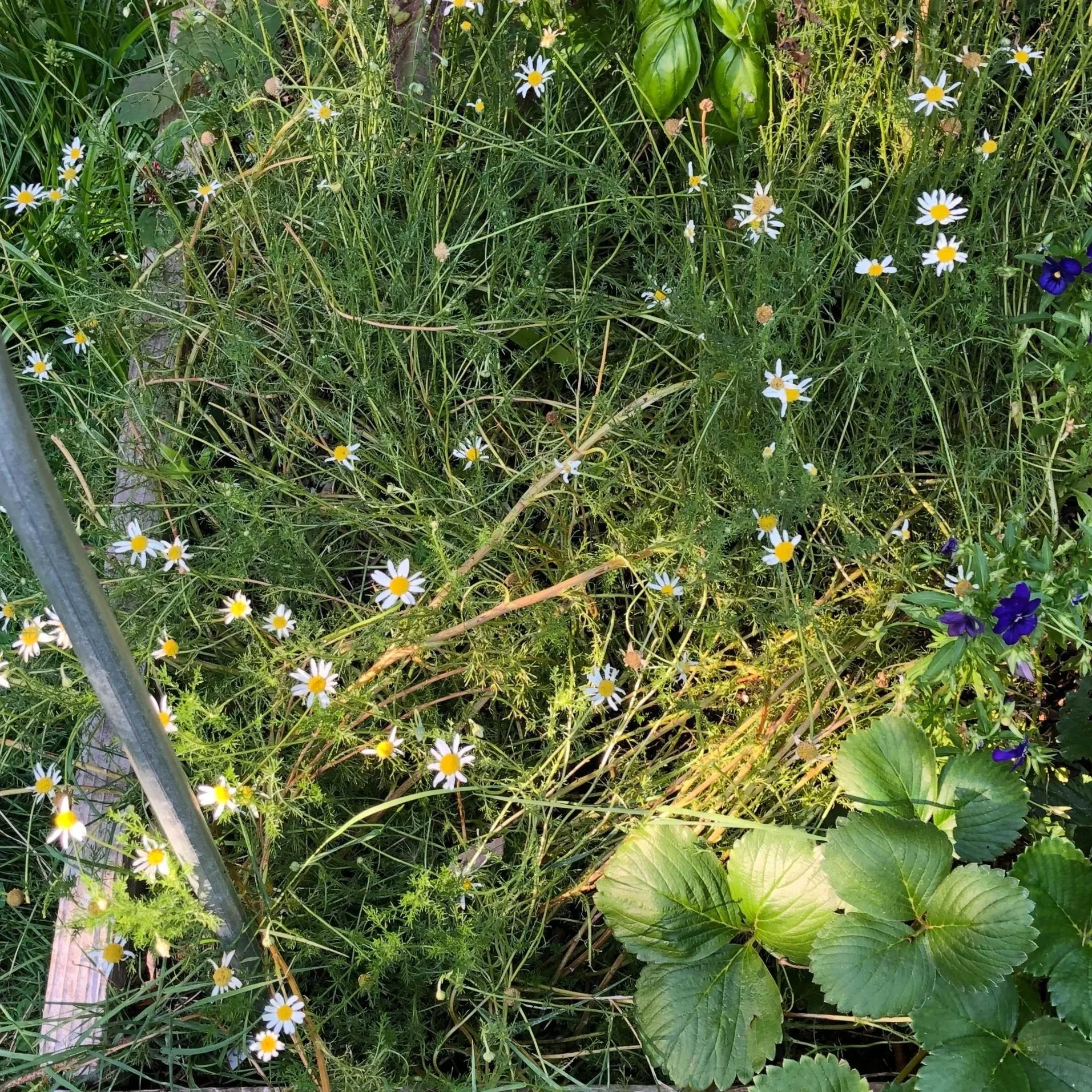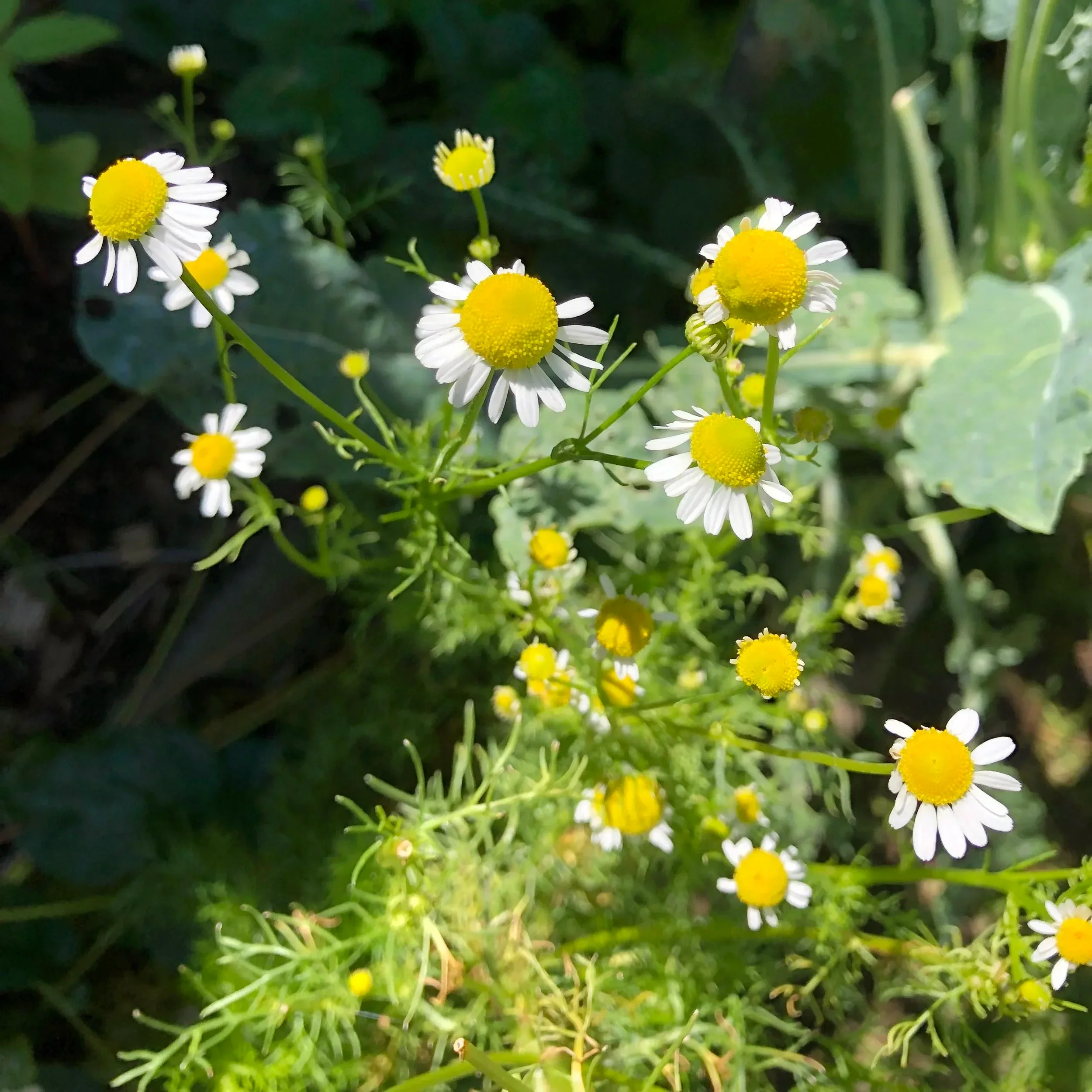Chamomile: An Herb for the Restless
Chamomile is an herb that every gardener should have in their repertoire. It is super easy to grow and has a wealth of benefits when consumed, especially when it’s consumed as a tea. Chamomile lover Jerad Bryant shares how to plant and care for this aromatic herb.
I use chamomile tea to help me calm down in the afternoon and prepare my body for sleep in the evening. This herb has benefits like reducing inflammation when applied topically; some herbalists use it internally to treat ulcers and gastrointestinal inflammation. I mainly advocate using chamomile for its calming, sedating effects. It is an all-natural way to help your body and mind prepare for rejuvenating rest.
Roman chamomile, Chamaemelum nobile
There are two main types of chamomile used in herbal teas and remedies. The first and oldest known species of chamomile is Chamaemelum nobile. Commonly referred to as “Roman chamomile,” this perennial herb produces a mat of fine foliage topped with delicate white and yellow flowers.
Every spring, this plant shoots up and quickly spreads out. Roman chamomile also produces a wealth of flowers. They can be used for oil infusions meant for the skin. Tea made from this plant will taste bitter. Trust me, I’ve tried it!
German chamomile, Matricaria chamomilla
The other chamomile plant is an annual called “German chamomile,” known botanically as Matricaria chamomilla. This is the type most commonly used for tea, as it makes a delicious herbal tea.
German chamomile is an annual, meaning it will flower, produce seed, and die in one year. In most climates, this chamomile reproduces on its own in your garden. It has in mine!
I like to have both Roman and German chamomile in the garden. Due to their strong scents, these plants repel common pests by masking the smell of other tasty plants. Chamomile also draws in ladybugs and wasps that predate common garden pests like aphids.
To use chamomile as a companion plant, simply plant it near your other plants. Some crops that benefit from chamomile being nearby are cucumbers, basil, and squash. I have chamomile planted near my tomatoes to keep the ladybugs coming in. They love to eat tasty aphids!
How to Sprout Seeds
Sowing seeds can be a daunting task! I know this from years of sowing seeds and experiencing many failures and successes. I have found that there are a few different ways to ensure easy seed germination.
The most important aspect of starting chamomile from seed is that the seeds need light to germinate. Chamomile seeds are also really tiny. To easily sow chamomile, follow these steps:
Fill a propagation tray or some small 4” pots with moist dirt. We will be surface sowing the seeds, so having moist dirt in the pot is crucial.
Open the chamomile seed packet. Lightly shake the packet over the pots to have seeds cover the surface of the dirt.
With dry hands, press down lightly on the dirt. This helps the seeds stay on the wet dirt and germinate quickly.
Spray the surface of the dirt with a fine water mist.
Place the trays or pots near a light source, either a bright window indoors or grow lights. I use grow lights as they are constant and not dependent on weather conditions.
Ensure the surfaces of the pots stay moist. Chamomile can take 7-14 days to germinate, and the seeds must not dry out.
To help them stay moist, you can scatter a light layer of dirt or vermiculite on top of the pots. Just be sure not to cover with too thick a layer, as it can prevent the seeds from receiving sufficient light to germinate.
And that’s it! Your seeds should sprout after a week or two. Keep them moist and let them grow a few leaves. Once the seedlings grow a few inches and have roots reaching the bottom of the pots, they are ready for transplanting into the garden.
How to Grow Chamomile
Both Roman and German chamomiles are easy plants to care for. They need well-drained soil rich in organic matter, and they prefer consistent irrigation during the growing season.
German chamomile flowers shine under the summer’s sun.
Roman Chamomile
Roman chamomile is a spreading groundcover and can quickly cover an area. I have it growing in my raised garden beds, and I let it ramble out a bit. Whenever the stems reach out too far and root, I cut them, dig them up, and plant them elsewhere. If you’re afraid of Roman chamomile overtaking your garden, you can grow it in a pot with good drainage. Just be sure to keep it well watered on hot summer days.
Roman chamomile prefers full sun; however, it will benefit from some afternoon shade in climates with long, hot days. You can plant it in partial shade, but it will not grow as vigorously and it will produce few flowers. Plant in an area with rich soil and keep the area moist while chamomile gets established. After it is established, Roman chamomile is drought-tolerant and can receive moderate water during the growth season.
German Chamomile
German chamomile is an upright grower with delicate, lacey foliage. I love this plant because it will readily self-seed itself in good growing conditions. Simply transplant your German chamomile out into the garden in early spring after the last frost.
Situate it in a site with moist and organically rich soil and keep it watered while it establishes itself. This plant also prefers full sun and will benefit from afternoon shade in hot climates. German chamomile grows low to the ground in spring and will shoot up come summer. The warmer temperatures signal to the plant that it is time to grow flowers!
If you’d like German chamomile to reseed itself in your garden, leave a few blossoms on the plant in late summer. These will form seeds that will then fall to the ground around the plant when they’re ready. In early spring, these seeds may sprout and give you another crop of chamomile! This may not always work, as some conditions are more hospitable than others; I recommend collecting a few of these seeds and storing them in case you need to start more German chamomile indoors.
To collect the seeds, pick a few spent blossoms in late summer off the plant and rub the flower head into a jar. The seeds should fall off readily into the jar. Be careful, as these seeds are tiny!
Final Thoughts
If you have questions or comments about chamomile, let me know in the comments below. I hope this guide has helped you. Thank you for reading, and happy growing!



